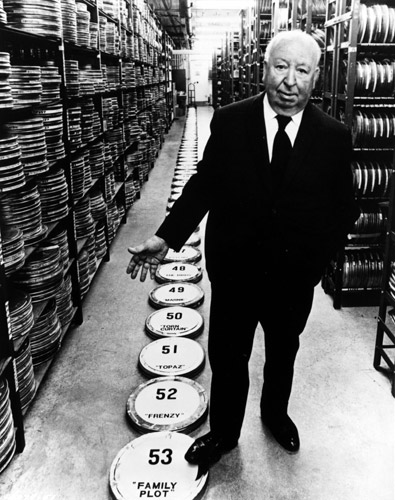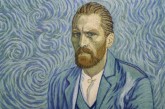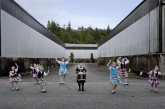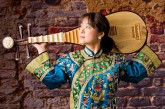Girare un film, per me, significa innanzi tutto raccontare una storia. Questa storia può essere inverosimile, ma non deve mai essere banale. È preferibile che sia drammatica e umana. Il dramma è una vita dalla quale sono stati eliminati i momenti noiosi. Poi entra in gioco la tecnica e, qui, sono contrario ai virtuosismi. La tecnica deve arricchire l’azione. Non si tratta di scegliere un’angolazione che susciti l’entusiasmo del capo operatore. L’unica mia preoccupazione, mettendo la macchina in questo o in quel posto, è quella di ottenere la scena nella migliore forma possibile. La bellezza delle immagini, la bellezza dei movimenti, il ritmo, gli effetti, tutto deve essere subordinato e sacrificato all’azione.
Questa è una delle dichiarazioni rilasciate nel 1962, appena terminata la regia de Gli Uccelli, da quel genio di Alfred Hitchcock a François Truffaut – regista e teorico del cinema, tra i creatori della Nouvelle Vague e critico dei Cahiers du Cinéma – nel corso di un’intervista di cinquanta ore, diventata il libro Il Cinema secondo Hitchcock*, in cui il regista – nato a Londra nel 1899 – ha risposto a cinquecento domande sulla sua carriera, riflettendo sulle circostanze che hanno portato alla nascita di ogni film, sulla costruzione della sceneggiatura, sui problemi di regia e sulla stima del loro risultato commerciale e artistico, affrontando il tutto secondo un’ottica rigorosamente cronologica. Ne è così emerso un profondo distacco tra l’imperturbabilità dell’uomo pubblico e la vulnerabilità della dimensione privata, fortemente caricata di quelle sensazioni che sarebbero poi state trasmesse agli spettatori attraverso i film. Per un atavico bisogno di protezione, Hitchcock doveva essere sempre un gradino più in alto rispetto agli attori, ai produttori e ai tecnici, affinché questi non compromettessero l’integrità del film: si occupava della sceneggiatura, del montaggio, della fotografia, del suono. Cercando una soluzione per affascinare e nello stesso tempo di coinvolgere gli spettatori nell’azione, Hitchcock riuscì a proteggersi anche dal pubblico con l’arma della paura, distribuita nelle sue innumerevoli scene di suspence, che sono diventate il suo tratto caratteristico, in cui le situazioni drammatiche sono presentate secondo la massima carica d’intensità e in cui è necessario che il pubblico sia informato di tutti gli elementi in gioco affinché provi delle emozioni identificandosi con il personaggio in pericolo. (…)

Making a film means, first of all, to tell a story. That story can be an improbable one, but it should never be banal. It must be dramatic and human. What is drama, after all, but life with the dull bits cut out. The next factor is the technique of film-making, and in this connection I am against virtuosity for its own sake. Technique shouldenrich the action. One doesn’t set the camera at a certain angle just because the cameraman happens to be enthusiastic about that spot. The only thing that matters is whether the installation of the camera at a given point is going to give the scene its maximum impact. The beauty of image and movement, the rhythm and the effects—everything must be subordinated to the purpose.
This statement belongs to the genius that was Alfred Hitchcock (born in London in 1899 and died in Los Angeles in 1980). It is part of his seminal interview with François Truffaut (director, cinema theorist, one of the creators of the Nouvelle Vague and a contributor for “Cahiers du Cinéma”) which took place in 1962, immediately after he had finished directing The Birds. The interview, which lasts fifty hours and was later turned into the book Cinema According to Hitchcock, sees the filmmaker answer five hundred questions on his carrier (in a strictly chronological order), reflecting on: the circumstances that influenced and contributed to the creation of each of his films, on the construction of screenplay, on the problems faced when directing and on the commercial and artistic success gained by his movies. A gap is therefore exposed between the composure of his public self and his vulnerability within his private life, which was charged with the strong emotions that were consequently conveyed to his viewer via the films. Due to a primitive protective instinct, Hitchcock felt the need to always be superior to his actors, technicians and producers. To ensure that the former would not compromise the film’s integrity, he managed and oversaw the screenplay, the montage, the photography and the sound effects. Through his constant search for a solution that would simultaneously leave the spectators fascinated and also involve them in the action, Hitchcock was also able to protect himself from the spectators. The solution he found was fear and he used it innumerable times in scenes full of suspense, which have since become his trademark. These scenes depict dramatic situations that are charged with intensity; scenes that require the audience to be aware of all the elements at play, so that they may identify with (and feel the same emotions as) the character in danger.
Valentina Tovaglia
D’ARS year 53/nr 215/autumn 2013 (abstract dell’articolo)




